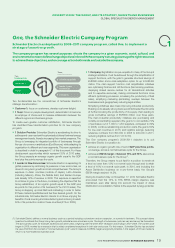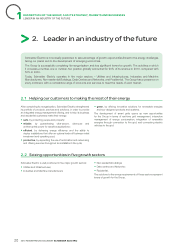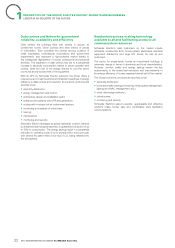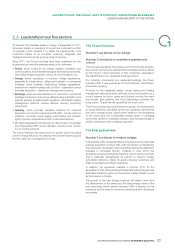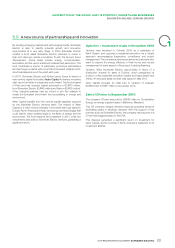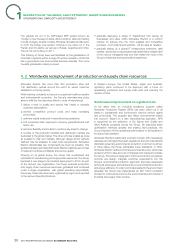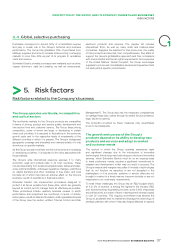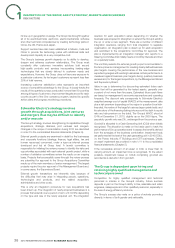APC 2010 Annual Report Download - page 31
Download and view the complete annual report
Please find page 31 of the 2010 APC annual report below. You can navigate through the pages in the report by either clicking on the pages listed below, or by using the keyword search tool below to find specific information within the annual report.
DESCRIPTION OFTHEGROUP, ANDITSSTRATEGY, MARKETS ANDBUSINESSES
1
INNOVATION AND R&D: SERVINGGROWTH
>
3. Innovation and R&D:
servinggrowth
Today, innovation is developed alongside customers and business clusters specialising in technology. Schneider
Electric is constantly expanding its global R&D network, combining its own competencies, strategic acquisitions and
partnerships with companies and prestigious universities.
In line with the Group’s strategy, its innovation programs focus on effi ciency as well as simplicity and the straightforward
implementation of products and solutions, with an ever-decreasing impact on the environment.
These new responses to the challenges of energy effi ciency and smart grids combine high-tech products, services
and software, which are often developed in the context of partnerships.
3. 1 A new approach to innovation
Innovation remains an essential growth driver for Schneider
Electric. However, the accent has now moved from the new
product equipped with ground-breaking technology to innovation
linking products, services and software with “intelligent” solutions.
Customers are looking for integrated solutions that will make their
lives easier and optimise costs.
The convergence of automation, information and communication
technologies is accelerating this trend and offers a unique
opportunity for the companies that are able to meet this challenge.
The very fast growth of emerging economies is setting a new rhythm
and requires products, services and solutions to continually evolve.
In order to identify these requirements, understand the challenges
and respond to them with pertinent solutions, companies need to
be at the heart of the markets and to develop innovation in different
locations.
To be successful, innovation must be multidisciplinary, and its
results need to be quickly and effectively deployed. Success also
requires the ability to design and manage collaborative innovation
processes.
2010: the rise of EcoStruxure
EcoStruxure is a Group-wide R&D program. Launched in 2009,
the program defi nes a common architecture enabling Schneider
Electric’s electrical distribution, critical power and cooling
services, automation and industrial and building control systems
to be combined with solutions encompassing complete energy
management or other functional areas. EcoStruxure therefore
represents a response to customer expectations for optimum
energy effi ciency with lower investment and operating costs.
The EcoStruxure program was accelerated considerably in 2010.
The research phase was completed, and the program entered
its development phase, in order to support the increasingly
sophisticated applications bringing together products from the
Group as well as those of other manufacturers.
Strengthening partnerships
Schneider Electric’s new focus on solutions requires its various
product and services activities to work more closely together to
develop innovation. This is the main objective of the Innovation
and Technology Committee, which was set up in 2009 and
brings together the technical directors of the different activities and
members of the Strategy & Innovation Department.
In accordance with the ethos of the EcoStruxure program, the
Committee defi nes and manages the adoption of common
hardware and software platforms, which reduce costs and increase
product interoperability. Based on open architecture and standards,
these platforms also facilitate the integration of products and
solutions coming from acquisitions or partnerships.
3. 2 Experts at the heart of their markets
Schneider Electric combines its growth strategy in emerging
economies with a move towards the globalisation of its capacity to
innovate. Exporting standard innovations to the rest of the world, as
in the past, is no longer appropriate.
Research and development centres in China and India now have full
responsibility for programs dedicated to these emerging economies
as well as global programs.
Global innovation
Around 8,600employees are directly involved in R&D or technical
engineering in 25 countries and at more than 70 sites, which
represents growth of almost 15%, of which two-thirds relates to
the acquisition of Areva’s Distribution business. This geographic
spread, which mirrors the breakdown of Group revenue, is critical
for understanding the needs of local markets and for forging R&D
2010 REGISTRATION DOCUMENT SCHNEIDER ELECTRIC 29


